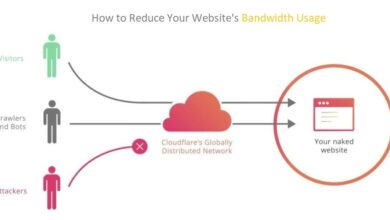Challenges and Solutions in Cross-Platform Mobile App Development

The digital era has seen an explosion in mobile app usage, with billions of users globally relying on mobile applications for everything from communication to shopping, entertainment, and beyond. As businesses strive to reach wider audiences, the appeal of cross-platform mobile app development has grown. Cross-platform mobile application development allows developers to create applications that run smoothly on multiple operating systems, such as iOS and Android, from a single codebase. This approach offers significant benefits, including time and resource savings, and a broader reach.
However, while cross-platform development is attractive, it comes with its own set of challenges. Understanding these limitations is crucial for developers to navigate the complexities and leverage the full potential of cross-platform frameworks. This guide delves into the common challenges faced in cross-platform mobile app development and offers practical solutions and best practices to overcome them.
Common Challenges in Cross-Platform Development
Performance and User Experience (UX)
One of the primary concerns in cross-platform development is performance. Native apps are optimized for their specific operating systems, ensuring high performance and a smooth user experience. Cross-platform apps, on the other hand, often face performance issues because they need to be compatible with multiple platforms.
Potential for Slower Performance Compared to Native Apps
Cross-platform apps can sometimes lag in performance compared to native apps. This is because they often rely on intermediary layers to translate the shared codebase into native code, which can introduce delays and inefficiencies. Complex animations, heavy computational tasks, and intensive graphics rendering are areas where cross-platform apps might struggle.
Difficulty Achieving a Perfect Native Look and Feel Across All Platforms
Ensuring a consistent user experience that matches the native look and feel across different platforms is challenging. Each operating system has its own design guidelines and user interface (UI) conventions. Cross-platform frameworks might not always provide the necessary tools to replicate these nuances perfectly, leading to a user experience that feels out of place on one or more platforms.
Limited Access to Native Features and APIs
Cross-platform frameworks aim to provide a unified codebase that works across different platforms. However, this can limit access to specific device functionalities and APIs that are unique to a particular operating system.
Certain Device Functionalities Might Be Inaccessible Through Cross-Platform Frameworks
Some advanced features and hardware capabilities might not be fully accessible through cross-platform frameworks. For example, access to the latest sensors, camera functionalities, or platform-specific gestures might be limited or unavailable.
Workarounds and Alternative Solutions Might Be Needed
To access these native features, developers often need to resort to platform-specific code or plugins. This adds complexity to the project and can lead to maintenance challenges as both the shared and platform-specific codebases need to be updated and tested.
Debugging and Testing
Debugging cross-platform apps can be more complex than debugging native apps due to the need to account for differences in how each operating system executes the code.
Debugging Across Different Platforms Can Be More Complex
Errors and bugs might manifest differently on iOS and Android, requiring extensive testing and debugging on each platform. Tools that provide a unified debugging experience are improving, but challenges remain.
Importance of Thorough Testing on Various Devices and OS Versions
Given the diversity of devices and OS versions in the market, thorough testing is essential. Developers need to ensure their apps work consistently across a wide range of devices, which requires significant time and resources.
App Store Guidelines and Approvals
Submitting apps to app stores involves navigating different guidelines and approval processes, which can be particularly challenging for cross-platform apps.
Each App Store Has Its Own Guidelines and Approval Processes
Apple’s App Store and Google Play have different rules and regulations. Ensuring compliance with both sets of guidelines can be time-consuming and complex.
Potential for Delays or Rejections Due to Non-Compliance
Non-compliance with app store guidelines can lead to delays in approval or outright rejections. This can disrupt the app’s launch schedule and increase development costs.
Long-Term Maintenance and Updates
Maintaining and updating cross-platform apps presents unique challenges, particularly in keeping up with framework updates and ensuring compatibility.
Keeping Up with Framework Updates and Potential Compatibility Issues
Cross-platform frameworks are continuously evolving, introducing new features, and deprecating old ones. Staying up-to-date with these changes and ensuring the app remains compatible can be challenging.
Managing Codebase for Different Platforms Efficiently
Managing a single codebase that runs on multiple platforms requires careful planning and organization. Ensuring that platform-specific customizations do not lead to code fragmentation is crucial for long-term maintainability.
Solutions and Best Practices
Choosing the Right Framework
Selecting the appropriate cross-platform framework is a critical decision that can influence the project’s success.
Evaluating Frameworks Based on Project Requirements and Target Platforms
Assessing the project’s specific needs and the target platforms is essential. Popular frameworks like React Native and Flutter offer extensive libraries and community support, but other frameworks might be better suited for particular use cases.
Considering Factors Like Performance, Maturity, and Developer Community Support
Frameworks with strong performance metrics, a mature ecosystem, and robust community support tend to be more reliable. They offer better tools, plugins, and documentation, which can significantly streamline development.
Prioritizing Performance Optimization
Performance is a key concern in cross-platform development, and optimizing it requires careful attention to detail.
Techniques for Code Optimization and Leveraging Native Modules for Critical Features
Optimizing the code to minimize overhead and leveraging native modules for performance-critical features can enhance app performance. Profiling tools can help identify and address bottlenecks.
Tools and Libraries for Improving Performance Across Platforms
Utilizing performance optimization tools and libraries designed for cross-platform frameworks can help maintain high performance. These tools offer functionalities like lazy loading, efficient state management, and optimized rendering.
Design for Consistency, Not Identity
Achieving a consistent user experience across platforms without forcing identical designs is crucial.
Creating a Consistent User Experience That Feels Natural on Each Platform
Designing a consistent experience that respects the native conventions of each platform ensures that the app feels natural to users on all devices. This involves adhering to platform-specific UI guidelines while maintaining a coherent overall design.
Utilizing Platform-Specific UI Elements When Appropriate
Incorporating platform-specific UI elements where appropriate can enhance the user experience. For instance, using native navigation patterns and controls helps make the app feel more integrated with the operating system.
Utilize Third-Party Plugins and Integrations
Third-party plugins and integrations can bridge functionality gaps and enhance the app’s capabilities.
Filling Functionality Gaps with Well-Maintained Plugins and SDKs
Well-maintained plugins and SDKs can provide access to functionalities that might not be available directly through the cross-platform framework. Ensuring these plugins are regularly updated and secure is crucial.
Importance of Evaluating Plugin Compatibility and Security
Evaluating the compatibility and security of third-party plugins before integration is essential to avoid introducing vulnerabilities or stability issues into the app.
Embrace Platform-Specific Features When Necessary
Sometimes, native development is necessary to achieve specific functionalities or performance requirements.
Understanding When Native Development Is Crucial for a Specific Feature
Identifying when a feature requires native development and adopting a hybrid approach can balance the benefits of cross-platform development with the performance and capabilities of native code.
Hybrid Approaches Combining Native and Cross-Platform Elements
A hybrid approach that combines native and cross-platform elements can optimize performance and functionality while maintaining a unified codebase where possible.
Streamlined Testing Strategies
Efficient testing strategies are vital to ensure cross-platform apps perform well across all targeted devices and operating systems.
Implementing Automated Testing Frameworks for Efficient Cross-Platform Testing
Automated testing frameworks can streamline the testing process, making it easier to run extensive test suites across multiple devices and OS versions.
Utilizing Device Emulators and Cloud-Based Testing Services
Device emulators and cloud-based testing services can provide access to a wide range of devices and configurations, ensuring comprehensive testing coverage without the need for extensive physical hardware.
Staying Updated with Frameworks and Best Practices
Keeping up with the latest developments in cross-platform frameworks and industry best practices is essential for long-term success.
Participating in Developer Communities and Following Framework Updates
Active participation in developer communities and following updates from framework maintainers helps stay informed about new features, bug fixes, and best practices.
Conclusion
Cross-platform development offers significant benefits, including cost savings, faster time to market, and broader reach. However, it also presents unique challenges that require careful planning and execution. At Hashlogics, we understand these complexities and are committed to helping developers navigate them effectively.
By understanding the challenges and implementing the right solutions and best practices, developers can create high-quality cross-platform mobile apps that deliver excellent performance and user experience. To succeed in cross-platform development, it is essential to choose the right framework based on project needs. This ensures that the chosen tools align with the specific requirements and goals of the project.
Prioritizing performance optimization and UX design is crucial. At Hashlogics, we emphasize creating seamless, efficient apps that offer a great user experience. Utilizing third-party plugins and embracing platform-specific features when necessary can enhance app functionality and user satisfaction.
Implementing efficient testing strategies is another key aspect of successful cross-platform development. By thoroughly testing apps, developers can ensure reliability and performance across different devices and platforms. Staying updated with the latest developments and best practices in cross-platform development is also vital for continuous improvement and innovation.
By following these guidelines, developers can navigate the complexities of cross-platform development and leverage its full potential. Mobile app development with Hashlogics can create successful and impactful mobile applications that drive business growth and user engagement.





